 |
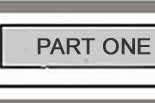 |
 |
 |
||||||||||
 |
|||||||||||||
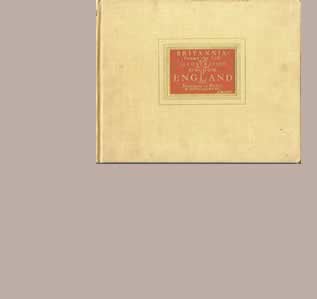 |
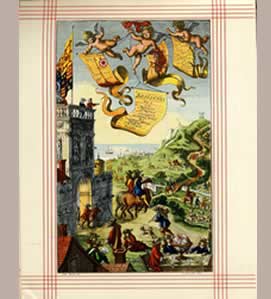 |
 |
|||||||||||
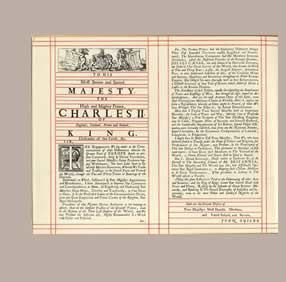 |
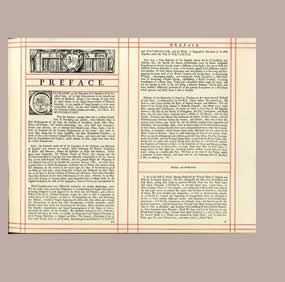 |
 |
|||||||||||
 |
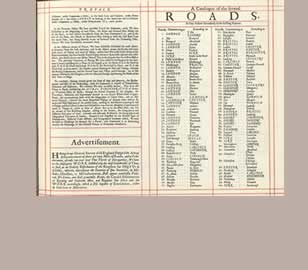 |
 |
|||||||||||
The titlepage was designed by Francis Barlow and engraved by Wenceslas Holler. It represents in visual form the intentions of the publication, a guide to the traveller, merchant, huntsman, landowner - how to get about on the roads of England and Wales. The huge size of the volume, the first British Road Atlas however precludes any sense of handy reference. THE TITLEPAGE - Three putti cavort with specimens of the product and its title. The central figure puts London at the centre of the publication's concerns. Two onlookers on a tower adorned with the Royal Standard (the book’s dedicatee is Charles II) and defended with cannon and embellished with figure sculpture, point to the flying banner with the tile of the book. In a surprising compositional device, the Palace from which its occupants are striding into the landscape, is set against a domestic roof top. Leisured figures walk about or lie on the ground, arguing the case for the merits of a loose leaf map,. In the right hand corner, the Cartographic profession is represented by three gentlemen sitting around a table with geometrical instruments and a globe on which ‘Africa’ is clearly marked. With a dramatic switch of scale two mounted figures advance on the open landscape from the portcullis of the castle. One rider consults a solitary unfurled single leaf of the Ogilby map. Their intended path is a sort of resume of the graphic potential of Ogilby’s maps, a trajectory over rivers, through woods to a summit, with clearly identified local landmarks such as bridges, windmills, houses, cornfields, churches and coastal beacons. Barlow shows much of the productiveness of the countryside, the fishermen. the shepherd, the fowler, and in the distance, the port with its shipping. A man on horseback (Ogilby himself?) directs two surveyors hurtling along with a Waywiser, often called a Perambulator. The device also appears on the heading to the Royal Dedication. One chapter heading of the preamble (image 5) offers a display of some didactic reasoning. To the left are written works of morality, the Holy Bible in two volumes, a book marked Laws. While on the right are a set of volumes dedicated to the continents, Africa and Asia, culminating in Ogilby’s own Britannia. |